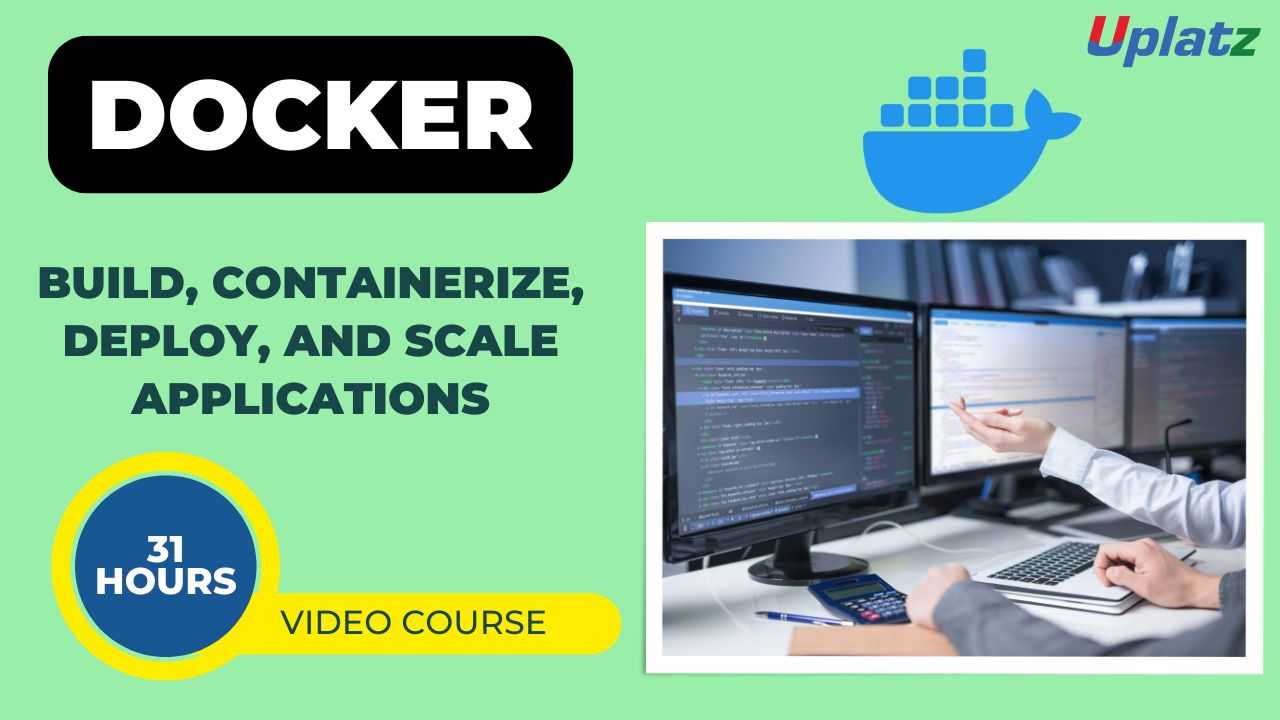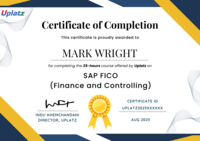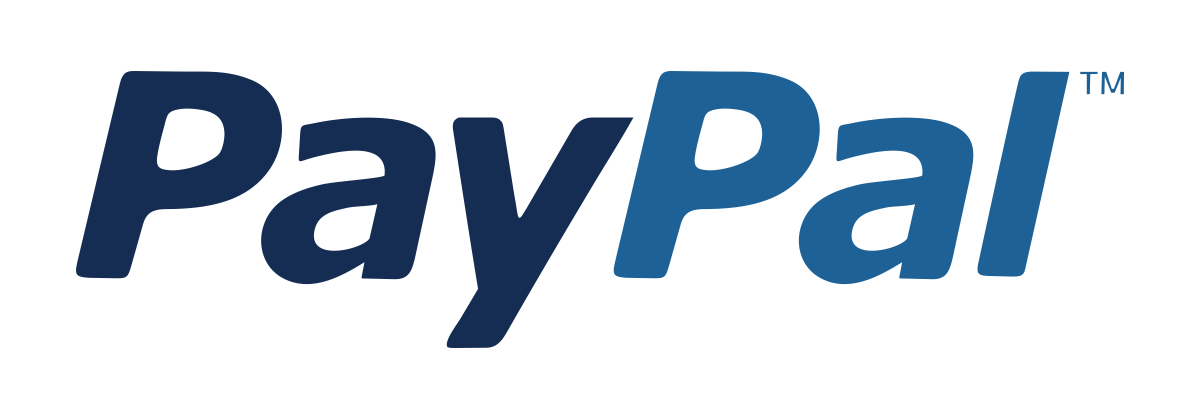Career Path - Systems Architect
Your roadmap to mastering System Design and leading Architecture decisions. Design scalable, secure, and high-performance cloud-native solutions. Price Match Guarantee
Full Lifetime Access
Access on any Device
Technical Support
Secure Checkout
Course Completion Certificate
Price Match Guarantee
Full Lifetime Access
Access on any Device
Technical Support
Secure Checkout
Course Completion Certificate
 91% Started a new career
BUY THIS COURSE (
91% Started a new career
BUY THIS COURSE (GBP 32 GBP 99 )-
 82% Got a pay increase and promotion
82% Got a pay increase and promotion
Students also bought -
-

- Career Path - IT Support Engineer
- 200 Hours
- GBP 32
- 757 Learners
-

- Docker
- 30 Hours
- GBP 12
- 1481 Learners
-

- Terraform: Automating Cloud Infrastructure
- 25 Hours
- GBP 12
- 1965 Learners

Career Path – Systems Architect (Self-Paced Online Course)
The Systems Architect – Self-Paced Online Course is a comprehensive learning journey designed for professionals who aspire to design, oversee, and manage complex IT systems at the enterprise level. In today's technology-driven business world, systems architecture is not just about infrastructure—it’s about aligning technology solutions with business strategy, ensuring scalability, performance, and long-term sustainability.
This course is carefully structured to provide you with both technical expertise and strategic insight, preparing you for one of the most in-demand roles in the IT industry: the Systems Architect. Whether you're currently a software engineer, systems analyst, IT project manager, or an aspiring architect, this program equips you with the knowledge and tools to succeed in designing large-scale systems across industries and domains.
With pre-recorded expert-led video modules, real-world case studies, and hands-on system design exercises, this course enables you to build and practice the skill set needed to architect technology solutions that solve complex business problems. By the end of the course, you’ll be able to structure IT environments that are not only functional and efficient but also scalable, secure, and aligned with long-term organizational goals.
The Value of a Systems Architect
In any large organization, the Systems Architect is the mastermind behind the design and integration of technology systems. They consider various factors like business requirements, performance, security, user experience, and operational efficiency to create architectures that support current needs while anticipating future growth.
Systems Architects are problem-solvers and visionaries—they define the blueprint of IT systems, select the right technologies, ensure compliance with policies and standards, and act as a bridge between business and technical teams. As businesses continue to grow in complexity, so does the demand for professionals who can design resilient, adaptive, and cost-effective technology infrastructures.
What This Course Offers
This self-paced course is built around three core pillars:
- Fundamental and Advanced Architectural Principles: Learn to evaluate and apply architectural styles such as layered, microservices, service-oriented, and event-driven architecture. Understand trade-offs and decision frameworks for selecting the right approach in different contexts.
- Tools, Frameworks, and Technologies: Gain exposure to the most widely used architectural tools and platforms including TOGAF, ArchiMate, UML, and cloud design patterns. Understand how to use architecture diagrams to communicate with stakeholders.
- Strategic Business Alignment: Go beyond technology and learn how Systems Architects contribute to business innovation. Understand how to align IT strategies with organizational goals, manage technical debt, mitigate risks, and support digital transformation.
Additional focus areas include:
- Performance Optimization: Techniques to ensure systems handle load effectively and scale with demand.
- Security Design: Incorporating security best practices into the architecture from the ground up.
- Interoperability and Integration: Strategies to connect legacy systems with modern applications and ensure smooth data exchange.
- Cost Management: Designing architectures that are not only effective but also budget-conscious.
- Cloud and Hybrid Architecture: Learn how to design for modern environments using AWS, Azure, or Google Cloud, along with on-premise systems.
Upon successful completion of the course, you’ll receive a Course Completion Certificate, which can be a valuable credential on your resume or LinkedIn profile. You will also gain career guidance on preparing for Systems Architect interviews, building a strong portfolio, and positioning yourself for leadership roles in IT architecture.
How to Use This Course Effectively
To get the most out of this course, consider the following approach as your personal roadmap to success:
1. Clarify Your Objectives
Before you begin, ask yourself: What do I want from this course? Are you aiming for a promotion, transitioning roles, or laying the groundwork for a certification like TOGAF or AWS Solutions Architect? Knowing your goal will help you focus your learning and apply it more effectively.
2. Establish a Study Routine
Since the course is self-paced, you have complete control over your schedule. However, consistency is key. Dedicate a set amount of time each day or week, and treat it like a formal class to build momentum and avoid procrastination.
3. Go Through the Lessons Sequentially
Each module builds on the last. While you may be tempted to jump ahead to cloud architecture or performance tuning, it’s important to first build a solid foundation in architectural thinking and frameworks.
4. Engage with the Hands-On Exercises
This course is not just theory—it includes design challenges and architectural case studies. Don’t skip these. They’re designed to simulate real-world decision-making, helping you apply what you learn to practical scenarios.
5. Use the Templates and Tools
Take full advantage of downloadable templates for system documentation, architecture diagrams, and evaluation checklists. Practicing with these tools will help you become fluent in the methods real architects use daily.
6. Take Notes and Reflect
As you progress, maintain a digital or physical notebook. Write down frameworks, design principles, key takeaways, and questions that arise. Periodic reviews of these notes will reinforce your learning and prepare you for interviews or team discussions.
7. Work on a Capstone Project
As you near the end of the course, pick a project—either real or hypothetical—and apply everything you’ve learned. Design a system from scratch, create architecture diagrams, justify your choices, and consider scalability, security, and business alignment. This can become part of your professional portfolio.
8. Network and Discuss
Join forums or communities focused on IT architecture. Platforms like GitHub, Reddit, or LinkedIn groups can offer additional resources, feedback, and networking opportunities with experienced architects.
9. Revisit Challenging Sections
Some topics, like integration of hybrid cloud environments or modeling non-functional requirements, may require extra attention. Don’t hesitate to rewatch videos, redo exercises, or seek further resources to deepen your understanding.
10. Track Your Progress
Periodically assess how much you've learned. Are you more confident in reading and designing architecture diagrams? Do you understand trade-offs between different technologies? Use checklists provided in the course to self-evaluate.
The Career Path – Systems Architect Self-Paced Online Course is not just about learning IT systems—it’s about mastering how to think like a strategist, a leader, and a visionary. You’ll gain the ability to design technology systems that don’t just work, but that enable business innovation, resilience, and scalability.
Whether you're looking to advance within your organization, transition into a new role, or lead the architectural strategy for enterprise IT environments, this course gives you the structure, content, and confidence to move forward.
Start today—and take the first step toward becoming a Systems Architect who leads technology transformation in the digital age.
Oops! No Video Subscriptions
By the end of this course, learners will be able to:
1. Understand the role and responsibilities of a Systems Architect in modern enterprises.
2. Design scalable, secure, and efficient IT architectures tailored to business needs.
3. Apply system modeling techniques using tools such as UML, ArchiMate, and TOGAF.
4. Integrate emerging technologies like cloud, microservices, and AI into system designs.
5. Evaluate architectural trade-offs and ensure system compliance, interoperability, and maintainability.
6. Create detailed documentation and architectural roadmaps.
7. Lead system audits, migrations, and performance evaluations.
8. Collaborate with stakeholders across IT, operations, and executive management.
9. Prepare for Systems Architect certifications and executive-level career paths.
Systems Architecture Course Syllabus
Module 1: Introduction to Systems Architecture
- Role and scope of a Systems Architect
- Architecture types: Enterprise, Solution, Infrastructure
Module 2: Core Principles and Design Patterns
- Scalability, reliability, performance, and security
- Common architectural patterns (e.g., layered, event-driven, microservices)
Module 3: Architecture Tools and Frameworks
- TOGAF, Zachman Framework
- ArchiMate, UML diagrams
- Using architecture modeling tools (Archi, Visual Paradigm)
Module 4: Cloud and Hybrid Systems Architecture
- Cloud-native design (AWS, Azure, GCP)
- Hybrid and multi-cloud architecture
- Cloud migration strategies
Module 5: Security Architecture
- Threat modeling and secure design principles
- Identity and access management (IAM)
- Compliance and regulatory considerations
Module 6: Data Architecture and Integration
- Data flow, storage, and governance
- API-based integrations and middleware
- Big data and AI/ML architectural integration
Module 7: Architecture Governance and Documentation
- Governance models
- Creating architecture blueprints and roadmaps
- Stakeholder communication
Module 8: Capstone Project
- Design a full enterprise architecture blueprint
- Peer review and expert feedback
Upon successful completion, learners receive a Course Completion Certificate by Uplatz that validates their knowledge and skills in systems architecture.
This course also serves as preparatory training for recognized industry certifications such as:
- TOGAF 10 Certification
- AWS Certified Solutions Architect
- Certified Information Systems Security Professional (CISSP) – Architecture Domain
- Google Cloud Professional Cloud Architect
These certifications boost professional credibility, salary potential, and job prospects, especially for roles in enterprise architecture, cloud architecture, and security design.
Graduates of this course can pursue diverse roles such as:
1. Systems Architect
2. Enterprise Architect
3. Solutions Architect
4. Cloud Architect
5. Technical/Infrastructure Architect
6. Security Architect
7. IT Director or CTO (long-term path)
8. Architecture Consultant (freelance or firm-based)
Industries hiring Systems Architects include: finance, healthcare, manufacturing, tech, defense, government, and telecom. The career path offers excellent salaries, long-term job stability, and continuous opportunities to engage with emerging technologies.
- What is the role of a Systems Architect?
A Systems Architect designs high-level system structures to ensure functionality, scalability, and alignment with business objectives. - How is a Systems Architect different from a Solutions Architect?
A Systems Architect focuses on broader system-level integration, while a Solutions Architect concentrates on solving specific business problems using targeted solutions. - What are key architectural principles?
Scalability, maintainability, security, interoperability, performance, and cost-efficiency. - What is TOGAF and why is it important?
TOGAF is a framework for enterprise architecture that helps standardize the architecture development process. - How would you approach designing a scalable architecture for a global e-commerce platform?
I’d consider microservices, load balancing, content delivery networks (CDNs), and cloud auto-scaling. - What tools do you use to model architecture?
Tools like ArchiMate, Lucidchart, Draw.io, and Visual Paradigm are commonly used. - How do you ensure system security in your architecture?
Implementing zero-trust principles, encryption, IAM policies, and regular audits. - What’s your experience with cloud platforms?
I’ve designed and deployed systems on AWS and Azure, utilizing services like EC2, S3, VPC, and Kubernetes. - Describe a time you resolved an architectural conflict between two teams.
I facilitated a workshop to align goals, presented pros/cons of each proposal, and helped choose a hybrid approach. - What are the future trends in systems architecture?
AI-driven systems, serverless computing, edge computing, and increasing importance of modular, API-based designs.









